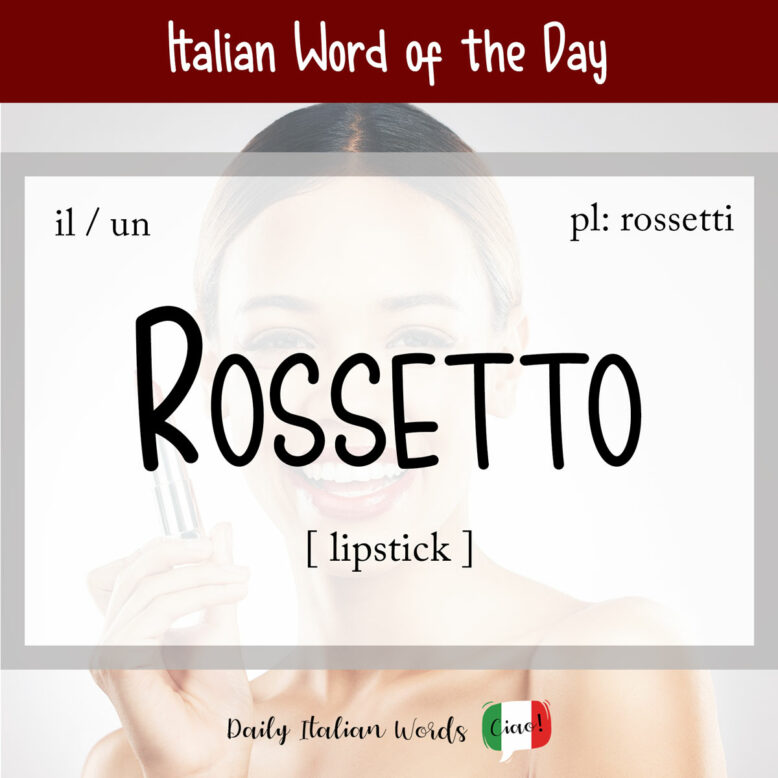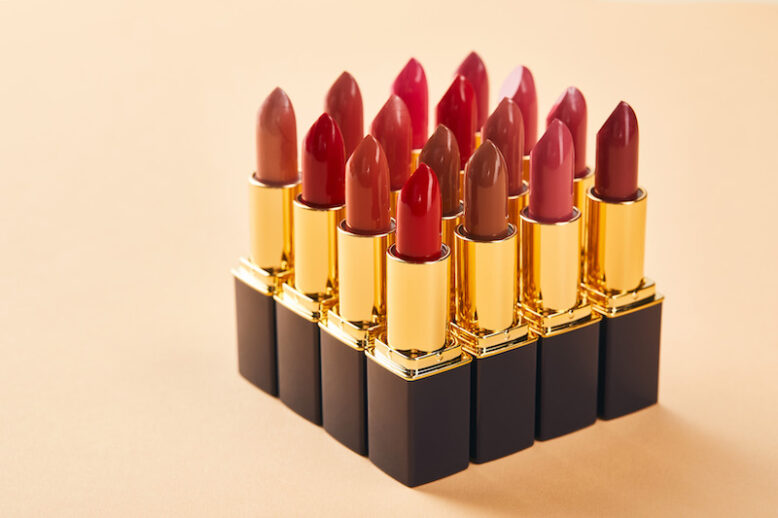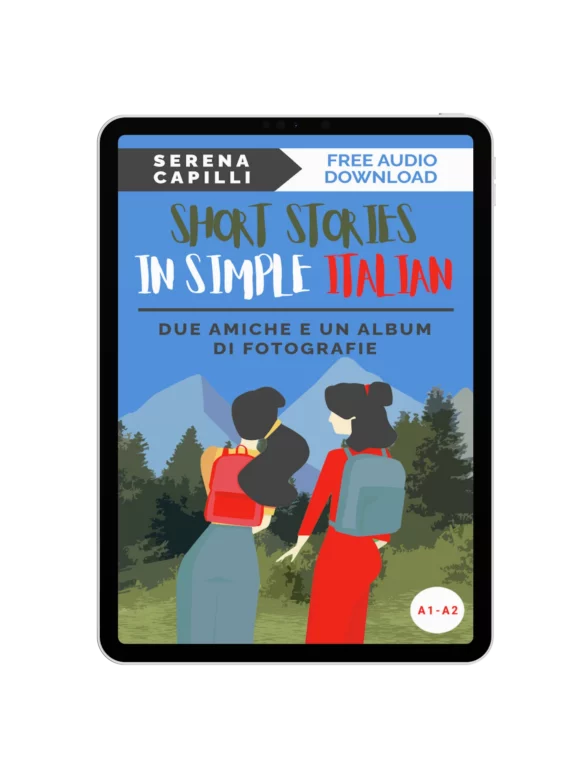In Italian, the name for the cosmetic that many women put on their lips (le labbra) in order to look more glamorous is rossetto (lipstick).
rossetto
lipstick

Rossetto is the diminutive form of the colour rosso, which means red, so the literal translation is “little red.” The suffix is -etto, which can also be seen in common words like:
- cassetto (drawer) > from cassa “box”
- gamberetto (shrimp) > from gambero “prawn”
- armadietto (small cupboard) > from armadio “wardrobe / closet / cupboard”
- braccialetto (bracelet) > from bracciale “bracelet”
- orsetto (teddy bear) > from orso “bear”
Rossetto is a masculine noun, so it takes the following definite and indefinite articles:
- il rossetto = the lipstick
- i rossetti = the lipsticks
- un rossetto = a lipstick
- dei rossetti = some lipsticks
If you want to say “to put on lipstick” in Italian, you can use two different verbs: mettersi or darsi. “To wear lipstick,” on the other hand, can be expressed with the verb indossare.
Non mi metto mai il rossetto.
I never wear lipstick.
Rossetto isn’t the only cosmetic designed for one’s lips. Burro cacao, also written as one word burrocacao, is the kind of transparent or lightly coloured lip balm or chapstick you put on your lips to keep them hydrated and protected from the sun’s rays. Lucida labbra (lip gloss), on the other hand, adds some sparkle and juiciness to otherwise dry-looking lips. And if you want to add some extra oomph to your lips, you can line them with la matita labbra (lip liner pencil).

In zoology, the tiny fish known as the transparent goby in English is called rossetto in Italian. The name from its slight reddish hue.
Heather Broster is a graduate with honours in linguistics from the University of Western Ontario. She is an aspiring polyglot, proficient in English and Italian, as well as Japanese, Welsh, and French to varying degrees of fluency. Originally from Toronto, Heather has resided in various countries, notably Italy for a period of six years. Her primary focus lies in the fields of language acquisition, education, and bilingual instruction.


